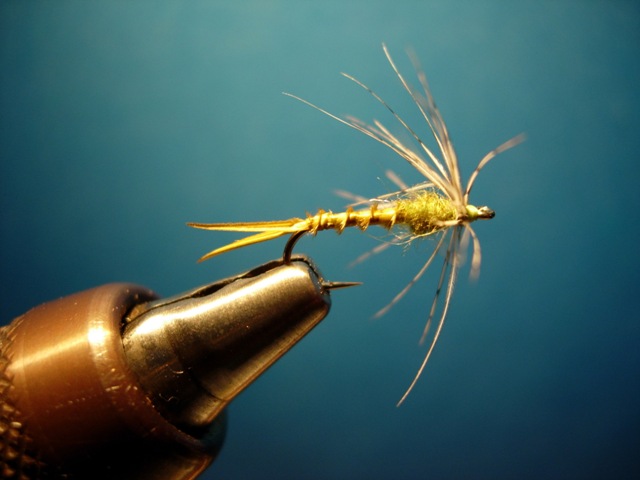 |
|
|
|
Last month we featured the Snowshoe Biot Emerger, which is a floating emerger—meaning it suspends in the surface film with at least part of the fly visible above the surface. Within the generic term “emerger,” there are fly patterns that actually don’t float, and are designed to be fished differently than their floating cousins. These patterns are like the traditional “wet fly,” designed to be fished sub-surface.
Traditionally, wet flies have been fished in a manner that makes the fly resemble an insect swimming and/or rising to the surface to hatch. An example of this is the old “Liesenberg Lift” technique. There is a lot of very interesting and hoary tradition to wet flies and the manner in which they are fished. For their technical and entertainment value, I commend you to such wonderful works as Nymph Fishing for Larger Trout, by Joe Brooks; Trout, by Ray Bergman; and Nymphs and the Trout, by Frank Sawyer, to name but a few.
For our purposes, this month’s fly represents the genre of emergers that are in reality wet flies, or “soft hackle flies,” as they are sometimes called. (Sylvester Nemes has written a series of excellent books on soft-hackle flies). As I have repeatedly said in this column, simplicity is divine—nothing is better than being able to crank out a dozen bugs in that last hour before running out the door to fish. The Biot Emerger can be tied in many colors and combinations. For the contest, let’s use olive as the basic color of the fly.
In each issue, American Angler magazine features a column by Dave Klausmeyer called “Klausmeyer’s Quick Fly.” Dave presented this pattern in a recent issue of the magazine. |
||

